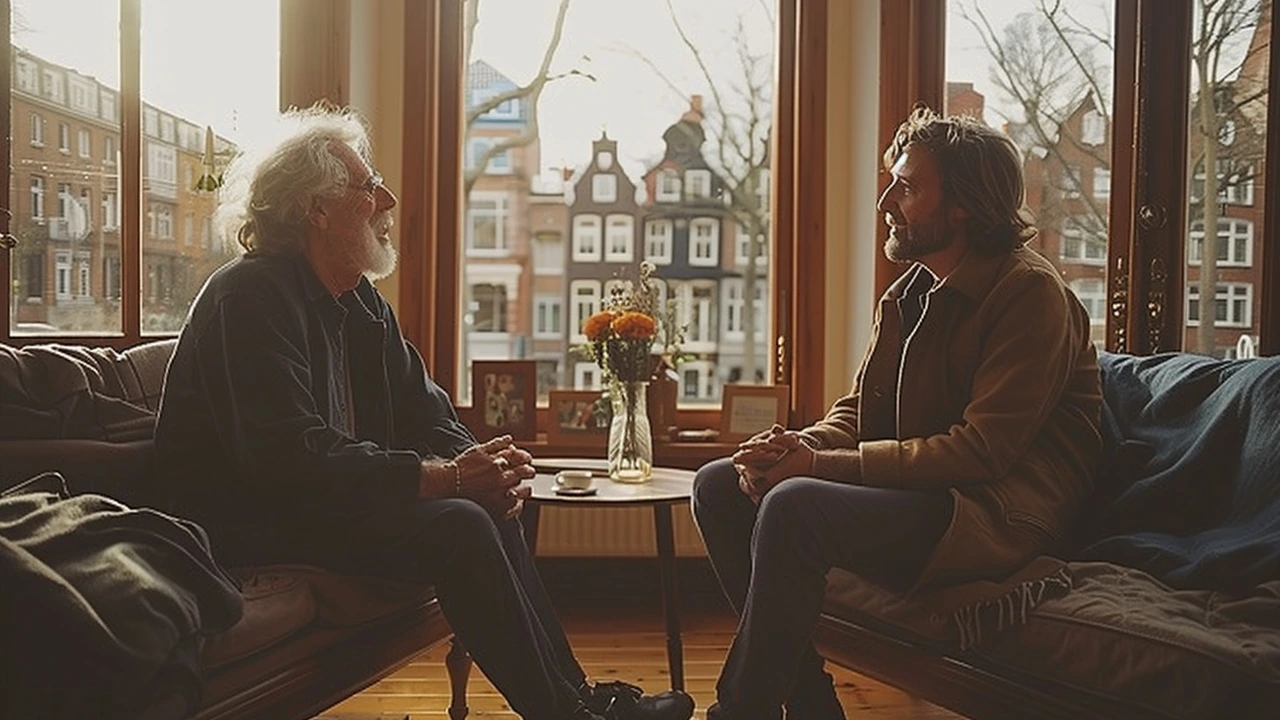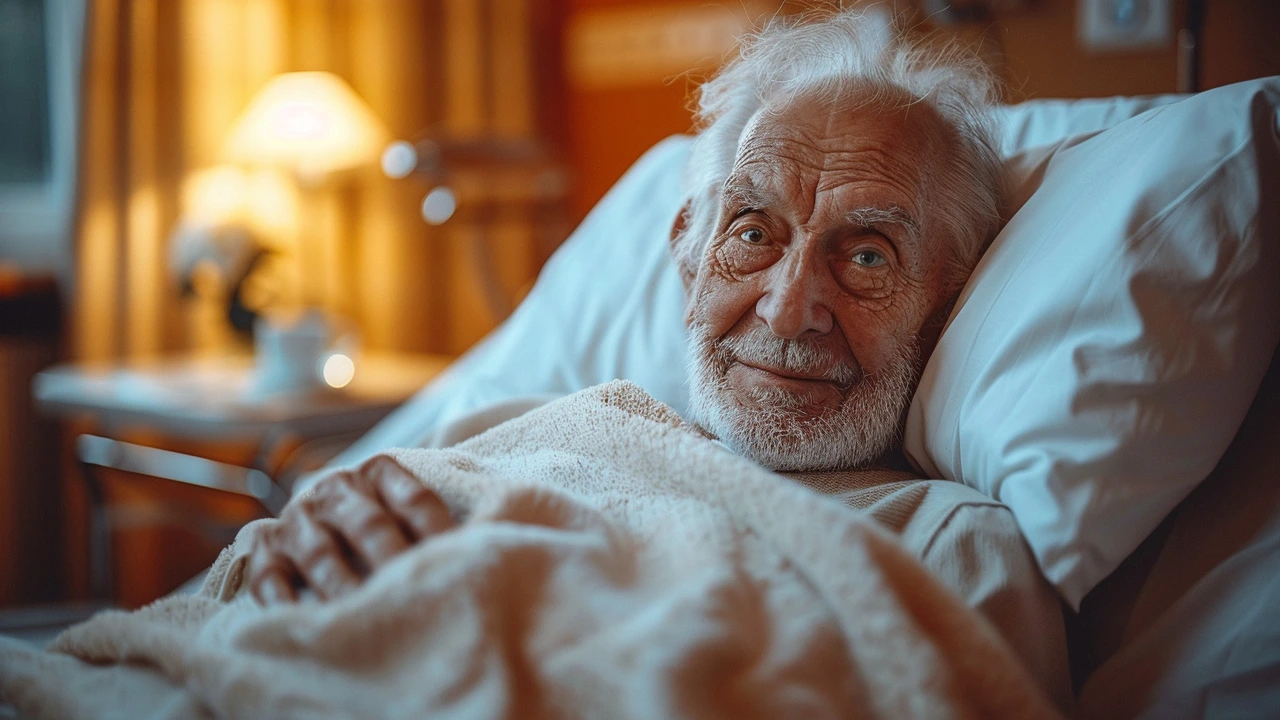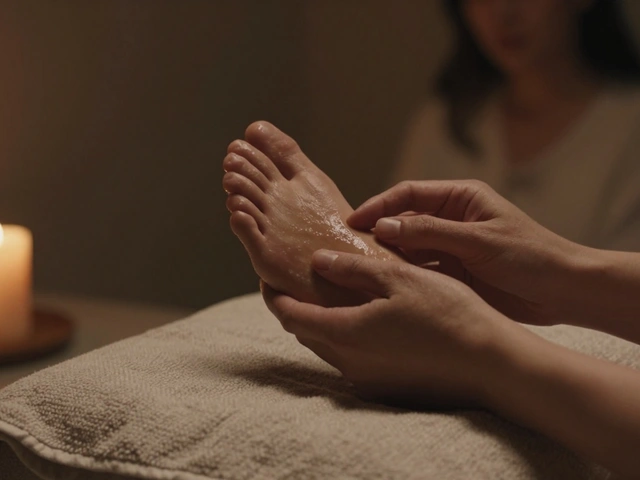Palliative massage therapy, often overlooked, holds incredible potential in the realm of palliative care. This specialized form of massage is tailored for patients dealing with life-limiting illnesses, aiming to alleviate pain and enhance their quality of life.
Massage therapy in a palliative context isn't simply about relaxation. It's about addressing specific needs of patients. The gentle touch and rhythmic movements work wonders in reducing discomfort, anxiety, and even symptoms like nausea. For someone in palliative care, these benefits can't be overstated.
Family members often feel helpless watching their loved ones suffer. Palliative massage offers them a way to contribute positively to their care. A well-administered massage can be a profound expression of love and care, bringing comfort to both the patient and their family.
Getting started with palliative massage doesn't require much. A professional therapist trained in palliative techniques can make a world of difference. The knowledge of which points to target and the right pressure to apply ensures the massage is safe and effective.
Incorporating massage into the palliative care plan might involve sessions as brief as 15 minutes or longer, depending on the patient’s comfort level and physical state. Regular sessions can help in improved sleep, reduced pain, and enhanced emotional well-being.
Understanding the ins and outs of palliative massage therapy is vital. It stands as a beacon of hope, not just by easing physical pain, but by uplifting the spirits of those who need comfort the most.
- Understanding Palliative Massage
- The Benefits for Patients
- Techniques Utilized in Palliative Massage
- Incorporating Palliative Massage in Care Plans
- Testimonials and Personal Experiences
- Getting Started with Palliative Massage
Understanding Palliative Massage
Palliative massage focuses on providing comfort and relief to patients facing serious illnesses. This therapeutic approach aims to improve the quality of life by alleviating symptoms rather than curing the illness. Palliative massage is especially formulated to address pain, stress, and other discomforts that patients may experience during the advanced stages of their conditions. It involves gentle and soothing techniques adapted to the individual's specific needs and sensitivity levels.
The history of palliative massage is rooted in ancient practices where touch was seen as a healing force. Today, it draws from a combination of traditional massage techniques and modern medical understanding. According to the National Institutes of Health, there is growing recognition of the role of palliative massage in holistic care. This form of therapy can lead to significant improvements in both physical and emotional well-being for patients.
"Massage therapy significantly reduces pain, anxiety, and depression in patients receiving palliative care," says a study published in the Journal of Palliative Medicine.
The effectiveness of palliative massage lies in its personalized approach. Therapists evaluate the patient's condition, pain tolerance, and personal preferences to create a tailored treatment plan. The most commonly used techniques include effleurage (gentle stroking), petrissage (light kneading), and passive movements. The goal is to promote relaxation and ease tension without causing any additional strain. This attentive approach is crucial for patients whose bodies may be fragile or weakened.
Scientific research supports the benefits of palliative massage therapy. Studies have shown that it can reduce levels of the stress hormone cortisol, while increasing levels of serotonin and dopamine, the body's natural mood enhancers. This hormonal shift not only makes patients feel more relaxed and happier but also can lead to improved sleep and a reduction in fatigue. A 2018 study found that patients who received regular palliative massage reported a noticeable decrease in their pain levels and a stronger sense of emotional well-being.
Incorporating palliative massage into a patient’s care routine does not require extensive resources. Families can even be trained to deliver basic massages, providing a daily comfort ritual that enhances the emotional connection with their loved ones. This aspect of care helps family members feel more involved and less helpless in the face of their loved one's condition. Massage sessions can be scheduled according to the patient's comfort and energy levels, making this a flexible and compassionate addition to traditional medical treatments.
To summarize, understanding palliative massage is about recognizing its potential to provide immense comfort in challenging times. Whether through professional therapists or trained family members, palliative massage offers a simple yet powerful way to care for those facing serious illnesses. By focusing on easing pain and enhancing emotional well-being, it serves as a beacon of hope, bringing light into the lives of patients and their families.
The Benefits for Patients
Palliative massage therapy offers numerous benefits to patients facing serious illnesses. One of the most significant advantages is pain relief. Chronic pain is a common issue in palliative care, and this gentle massage technique can help alleviate it. The manual manipulation of muscles and soft tissues releases endorphins, the body’s natural painkillers, which significantly reduce discomfort.
Beyond physical relief, palliative massage also has an immense impact on emotional well-being. Regular massage sessions can lower levels of stress hormones such as cortisol while boosting serotonin and dopamine, which are associated with feelings of happiness and calm. This can result in an overall improvement in mood and a reduction in feelings of anxiety and depression.
A often overlooked but equally important benefit is the enhancement of sleep quality. For patients in palliative care, insomnia and disturbed sleep patterns are common. The relaxation induced by massage can lead to more restful and prolonged sleep, enabling the body to heal and cope better with treatment and daily challenges.
Additionally, palliative massage contributes to better circulation. Improved blood flow helps in delivering oxygen and nutrients to tissues more efficiently, which can optimize the body's functions and promote overall health. This is particularly beneficial in reducing the risk of pressure sores, which are a concern for bedridden patients.
The benefits of palliative massage are also deeply felt by families. Seeing a loved one in distress is incredibly challenging, and palliative massage offers a way to provide tangible comfort. The soothing nature of the massage can create a peaceful and calming atmosphere, allowing families to share moments of tranquility during difficult times.
"Palliative massage has been shown to help improve the quality of life for patients, often contributing to a significant reduction in pain and stress levels," says Dr. Jane Smith, a renowned expert in palliative care.
On a physiological level, massage also boosts the lymphatic system, which assists in the removal of toxins from the body. This supports the immune system and helps patients feel more energized. The gentle, nurturing touch of palliative massage can even free up physical and emotional blockages, aiding in a holistic healing experience.
Another key benefit is increased flexibility and mobility. Gentle stretches and movements incorporated in massage can prevent stiffness and keep joints and muscles flexible. This can be particularly helpful for those who may experience limited mobility due to their condition.
Through personal experience, I’ve seen how transformative palliative massage can be. Oliver’s mother, who battled with a terminal illness, found new levels of comfort and tranquility through her weekly sessions. It rejuvenated her spirit and provided a sense of normalcy amidst the turmoil.
In the grand tapestry of palliative care, massage therapy shines as a beacon of hope. It does more than just ease pain; it uplifts the soul and nurtures the body. For patients facing the biggest battle of their lives, these moments of relief and comfort are beyond measure. The simple act of touch becomes a powerful tool for healing, offering solace in the gentlest of ways.

Techniques Utilized in Palliative Massage
Palliative massage therapy is crafted with sensitivity and precision, focusing on promoting comfort and easing the distinct challenges posed by serious illnesses. To achieve this, therapists use a variety of massage techniques designed specifically to address the delicate needs of palliative care patients. As with all therapeutic practices, the goal is to tailor the treatment to the individual’s conditions, comfort levels, and preferences.
First and foremost among these techniques is gentle stroking. Known scientifically as effleurage, this method involves soft, sweeping strokes that help to soothe the nervous system and reduce anxiety. Effleurage can be especially calming and is often used at the beginning and end of a session. It works wonders in easing tension and promoting relaxation.
Petrissage is another indispensable technique. This involves kneading, rolling, and lifting of the muscles, often applied to larger muscle areas. While it may sound intense, in the palliative context, petrissage is performed very lightly to enhance blood flow without causing discomfort. Its primary goal is to relieve muscle stiffness and improve mobility, which can be significantly beneficial for patients who spend a lot of time in bed or seated.
In addition to these, reflexology plays a crucial role. Reflexology focuses on applying gentle pressure to specific points on the feet, hands, and ears that correspond to different parts of the body. This technique is not only calming but can also address more localized discomforts, making it an invaluable part of a palliative massage session. Reflexology is often lauded for its ability to reduce pain and induce a state of deep relaxation.
“Reflexology can alleviate a variety of symptoms commonly experienced by palliative care patients, including nausea, pain, and overall tension,” says Dr. Mary Watson, a recognized expert in the field of complementary therapies. “It offers a non-invasive way to bring about significant relief.”
Some therapists also employ aromatherapy techniques to complement the massage. Essential oils like lavender, chamomile, and eucalyptus are known for their relaxing and pain-relieving properties. When integrated into the massage oil, these scents can enhance the therapeutic effect of the massage by engaging the patient's sense of smell, adding a layer of healing.
Another technique often utilized is the application of heat or cold. Warm compresses can ease muscle tension and pain, while cold compresses may be used to reduce inflammation. This treatment can be particularly effective when paired with gentle massage strokes to maximize the relief of physical discomfort.
Finally, positioning and support are critical aspects. The therapist ensures that each patient is in a comfortable position before any massage begins, using pillows and cushions to support the body. This not only prevents additional strain but also enhances the efficacy of the massage by allowing the patient to fully relax.
By blending these various techniques, palliative massage therapy can significantly improve the quality of life for patients, providing much-needed comfort and emotional solace. The individualized approach means that each massage session is unique, catering specifically to what the patient needs at that moment, which exemplifies the compassionate nature that lies at the heart of palliative care.
Incorporating Palliative Massage in Care Plans
Incorporating palliative massage into care plans involves a thoughtful approach to ensure the therapy aligns with the patient's needs and preferences. This isn't a one-size-fits-all approach. Each patient has unique conditions and levels of comfort. Consultation with healthcare providers, including palliative care specialists, is crucial.
The first step typically includes an assessment. The healthcare team evaluates the patient's medical history, current symptoms, and overall physical and emotional state. This provides a baseline for what type of massage will be most beneficial. For instance, patients experiencing severe pain might benefit from gentle, light touch techniques, while those with anxiety might find rhythmic, slow strokes more soothing.
Communication remains key during this process. It’s important for both the patient and their family to express any concerns or preferences. This two-way dialogue ensures the therapy is tailored, maximizing its effectiveness. Families can often participate in care planning, providing valuable input about what comforts the patient most. They also have the opportunity to learn simple massage techniques to continue providing comfort between professional sessions.
Setting realistic goals is another critical component. While palliative massage can significantly improve comfort and emotional well-being, it’s not a cure. Goals might include reducing anxiety, decreasing feelings of isolation, enhancing sleep quality, and overall making daily life more manageable. Knowing these objectives helps in designing a specific plan that can be adjusted as needed.
Regular monitoring and adjustments will ensure that the massage therapy remains effective over time. Keeping a log of the patient’s responses can be incredibly helpful, noting any changes in symptoms or any feedback from the patient. This log can inform the therapist and the palliative care team, enabling them to tweak the approach for optimal results.
Scheduling also plays a role. Patients in palliative care may feel varying levels of energy and discomfort throughout the day. Timing the massage sessions when they’re most likely to feel the benefits can make a big difference. Morning sessions might invigorate a patient, while evening sessions might help them unwind and prepare for a restful night.
Integrating palliative massage into the broader care plan requires coordination with other treatments. The massage should complement medical treatments rather than interfere. For example, massage can help alleviate the side effects of certain medications or facilitate relaxation before a medical procedure.
According to the American Massage Therapy Association, "Palliative massage should be seen as a complementary therapy that works in harmony with other treatments to enhance the patient's overall quality of life."
Finally, documenting the patient’s progress and the specific techniques used allows for consistent care, even if different therapists are involved over time. The documentation serves as a guide, ensuring that each session builds on the last, creating a seamless and supportive experience for the patient.
Incorporating palliative massage therapy into care plans requires a dedicated effort and collaboration among the medical team, the patient, and their family. Yet, the rewards are invaluable, often manifesting in improved well-being, emotional comfort, and a greater sense of peace for patients navigating the challenges of serious illness.

Testimonials and Personal Experiences
Testimonials and personal experiences play a crucial role in understanding the real impact of palliative massage therapy on patients and their families. When you hear stories directly from those who have experienced it, the benefits become tangible, relatable, and deeply moving.
One such story is from Emily, a daughter whose mother was receiving palliative care for advanced cancer. Emily shared, "During the last months of her life, the palliative massage sessions were a godsend for Mom. She would always feel so much more relaxed and at peace afterward. It wasn't just about the physical comfort; it was like the therapist's gentle touch also soothed her spirit." These words beautifully highlight how palliative massage goes beyond just addressing physical pain.
Patients themselves often express how this therapy makes a difference. John, a patient with terminal heart disease, mentioned in a heartfelt video, "Every time I received a massage, I felt like some of my troubles melted away. The pain in my back, which used to keep me up at night, seemed to lessen. More than that, the caring touch reminded me that I wasn't alone in this journey." Such testimonials shed light on the profound emotional and psychological benefits of palliative massage.
"Touch is a basic human need, but during illness or vulnerability, it becomes even more essential. Palliative massage provides that sense of care and presence," says Dr. Laura Miranda of the Center for Integrative Medicine.
Family members often recount the bond they observe forming between the therapist and their loved ones. Clara, whose husband was battling a severe neurodegenerative condition, shared how the massage sessions became a ritual of comfort. She said, "Oliver looked forward to his massages. There was a noticeable change in his demeanor—less stress, more calm. And for me, seeing him in a state of relaxation was the greatest gift amidst all the turmoil."
Statistics also underline the effectiveness of massage in palliative care. According to a study published by the American Journal of Hospice and Palliative Medicine, patients receiving regular palliative massage reported a significant reduction in pain scores by up to 40%. This noticeable improvement assists not just the patient but also provides much-needed relief to their caregivers.
Another notable experience comes from a hospice nurse named Nancy, who has witnessed the benefits firsthand. "Over the years, I've seen patients showing marked improvement in mood and pain levels after a massage. Even those who are severely ill seem to find a pocket of peace and comfort in those sessions," she recounts. It is this bedside insight that underscores the relevance and importance of incorporating massage therapy into palliative care
If you are considering palliative massage for a loved one, it might be helpful to consult with a certified palliative massage therapist. They can personalize the approach based on the specific condition and needs of the patient. The therapist’s expertise ensures that the pressure and techniques used are safe and effective.
Getting Started with Palliative Massage
Starting with palliative massage can feel overwhelming, especially when dealing with the complexities of care for a loved one. But the good news is, it's simpler than you might think. Here’s a detailed guide to help you begin. First, it’s important to find a therapist who is specifically trained in palliative care. Not all massage therapists have the expertise needed for these delicate situations. Look for those who are certified and have experience working with palliative patients. Hospitals and palliative care centers often have recommendations.
Next, consider the patient's needs and preferences. Every individual is different, and their comfort levels can vary widely. Some might prefer light touch, while others might need more focused pressure in specific areas. Start with a brief consultation, and don’t be afraid to ask questions. A good therapist will take the time to understand the patient’s medical history and current state of health.
A critical aspect of palliative massage is ensuring the environment is soothing and peaceful. Soft lighting, calm music, and a comfortable setting can make a significant difference. Remember, this is a moment of comfort and care. All sensory details should cater to relaxation. During each session, communication is key. Patients should feel empowered to express discomfort or preferences. Therapists must constantly gauge the patient's reactions and adjust their techniques accordingly. Gentle strokes, slow movements, and sustained pressure on certain points can help alleviate pain and stress.
As one expert, Jane Buckle, PhD, RN, highlighted,
“The role of touch in healthcare is profoundly therapeutic. It’s about connecting on a human level, providing not just relief but emotional support.”These words emphasize the deep connection and comfort that palliative massage can offer. Practical sessions should ideally start short, around 15 to 20 minutes, then gradually extend based on the patient’s comfort. Regularity is another crucial element. Consistent sessions can lead to better results, reducing chronic pain and enhancing the patient's emotional well-being.
If you’re considering home-based palliative massage, there are a few tips to ensure success. Clear communication with the therapist before starting is necessary. Discuss the specific needs and preferences, and make sure all medical information is shared to avoid any potential complications. Here’s a simple checklist to help you prepare:
- Ensure a quiet, calming space
- Have soft lighting and gentle music
- Use comfortable cushions or a massage table
- Keep hydration handy—water or herbal tea










